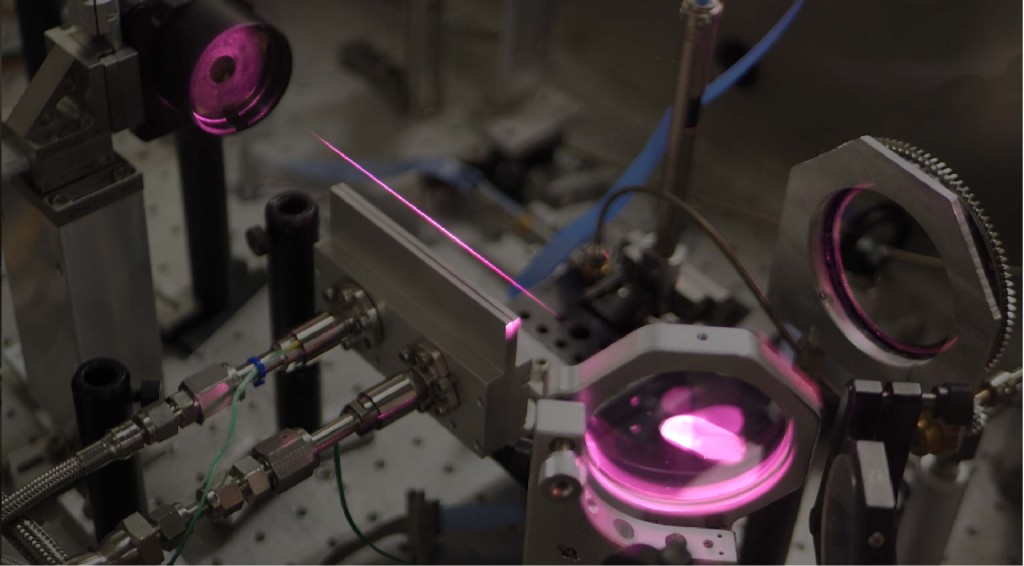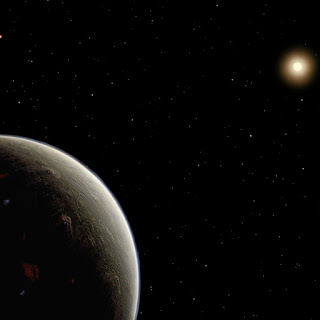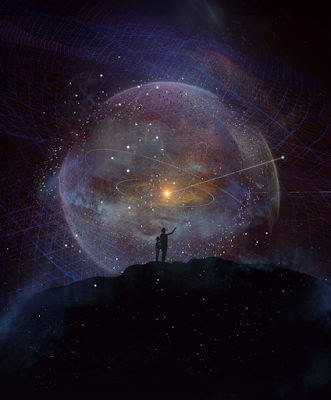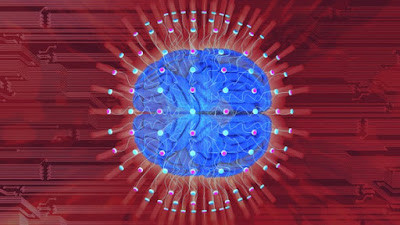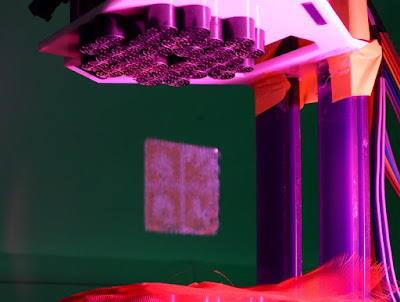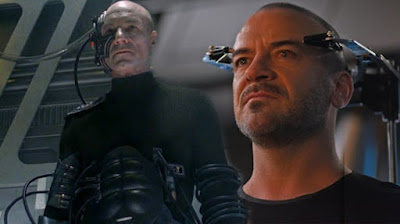 |
Image Source: Trump's 'Sharpie Gate' Hurricane Dorian Stunt is Getting Trolled on Twitter
Alison Sullivan, God's Daily Dot |
Topics: Civics, Civil Rights, Existentialism, Human Rights, Star Trek
The Handmaid's Tale is a dystopian novel by Canadian author Margaret Atwood, originally published in 1985. It is set in a near-future New England, in a totalitarian state resembling a theonomy that overthrows the United States government. The novel focuses on the journey of the handmaid Offred. Her name derives from the possessive form "of Fred"; handmaids are forbidden to use their birth names and must echo the male, or master, whom they serve.
Beginning with a staged attack that killed the president and most of Congress, a radical political group calling itself the "Sons of Jacob", exploiting religious ideology closely resembling some traits of Christian Reconstructionism, launches a revolution. The United States Constitution is suspended, newspapers are censored, and what was formerly the United States of America changes drastically into a theonomic military dictatorship known as the Republic of Gilead. The new regime moves quickly to consolidate its power, overtaking all pre-existing religious groups, including traditional Christian denominations; and reorganizes society along a new militarized, hierarchical model of Old Testament-inspired social and religious fanaticism among its newly created social classes. Above all, the biggest change is the severe limitation of people's rights, especially those of women, making them unable to hold property, handle money, as well as forbidding them to read or write.
The story is told in the first-person narration by a woman called Offred. In this era of declining birth rates due to increasing infertility brought about by environmental pollution and radiation, she is one of those few women with healthy reproductive systems. Hence she is forcibly assigned to produce children for the ruling class of men "Commanders", and is known as a "Handmaid" based on the biblical story of Rachel and her handmaid Bilhah. Apart from Handmaids, other women are also classed socially and follow a strict dress code, ranked highest to lowest: the Commanders' Wives in blue, the Handmaids in red with the exception of white veils around their faces, the Aunts (who train and indoctrinate the Handmaids) in brown, the Martha's (cooks and maids) in green, "Econo-wives" who handle everything in the domestic sphere in stripes, young and unmarried girls in white and widows in black.
Aptly described by one viewer as "the prologue to The Handmaid's Tale", Netflix's The Family is the new docuseries taking the world by storm.
A deeply gripping tale, the critically acclaimed show tells the story of the clandestine Christian organization called 'The Family' and their hidden influence on U.S. politics.
Based on a true story, The Family is a docuseries that combines archival photos and interviews with dramatic reenactments to investigate a secret Christian organisation known as The Fellowship Foundation, colloquially referred to as 'The Family'.
Their Washington D.C.-based network, comprised solely of men, includes numerous high-powered politicians, diplomats and religious leaders from around the world, who conspire together to influence legislation on a global level.
Their leader is a man named Doug Coe, described in the trailer as "the most powerful man in Washington you've never heard of". Coe believed that God's work was best carried out away from the public eye.
Source: The Family, docuseries on Netflix, Harper's Bazaar The Family author, Jeff Sharlet wrote it and its follow on, C Street as warnings on the abuse of power by an un-elected political organization that has out-sized influence on the US government. We've accepted the National Prayer Breakfast as "normal," when in strict constructionist reading of The Constitution, flagrantly violates The First Amendment. Margaret Atwood opined in interview that what she wrote in 1985 isn't something she dreamed up out of whole cloth: there are real-life analogs. What was dramatized in the book and now in the series as the overthrow of the federal republic, suspension of the US Constitution has a prologue we often don't see...until the "Sons of Jacob" think they can openly get away with violence. They may first have an ultra secret organization that no one except for one truthful author has ever heard about.
*****
The joke is first evangelical literature in the 1970s and the 1980s focused on the "end times" as a terrible, awful future event to avoid. 2 Chronicles 7:14 was often quoted at the end of a popular litany of speculative literature as a cosmic "get out of jail" card with the almighty. It also calmed and soothed Christian writers' audiences enough to consider the next book in their careers of scaring the bejesus out of their readers.
For most of our nation’s history, White Christian America (WCA) set the tone for our national policy and shaped American ideals. But especially since the 1990s, WCA has steadily lost influence, following declines within both its mainline and evangelical branches. Today, America is no longer demographically or culturally a majority white, Christian nation.
Drawing on more than four decades of polling data, The End of White Christian America explains and analyzes the waning vitality of WCA. Robert P. Jones argues that the visceral nature of today’s most heated issues—the vociferous arguments around same-sex marriage and religious and sexual liberty, the rise of the Tea Party following the election of our first black president, and stark disagreements between black and white Americans over the fairness of the criminal justice system—can only be understood against the backdrop of white Christians’ anxieties as America’s racial and religious topography shifts around them.
The mythology of Star Trek likely germinated in the nightmares Gene Roddenberry and people steeped in Cold War "duck and cover" drills (me included), thought a lot about: would World War III be the existential LAST war? Worlds orbit suns as we now observe throughout the universe. They do not require air, water or life - sentient or otherwise, just gravity, planetary physics and an orbital path.
It is mythology because benevolent aliens happening upon a fledgling warp species is pure "Deus ex machina." Warp drive is as imaginative as unicorns. Aliens that can traverse vast distances would probably be indifferent, if not militant to a technologically emerging species. Roddenberry could have easily made them Klingons. The short-lived Enterprise, debuting days after September 11, 2001, tried to document our unsteady first steps to the stars, prior to Federation bureaucracies, Prime Directives and the original intro that became The Captain's Oath. The CBS streamed, so far sophomore seasoned Discovery series not only fleshed out Captain Christopher Pike - the previous USS Enterprise's highest ranking Starfleet officer - it briefly alluded to the third world war in season 2 regarding ex-pat Earthlings and a time-traveling Red Angel (no spoilers - stream, binge and catch up).
What's missing is the cause.
Lying about Hurricane Dorian like a third grader forging his 68 on a report card to an "88" before his parents see it. It is callous of the lives lost in the Atlantic (20 and counting); the height of narcissistic personality disorder, and also illegal. 18 U.S.C. §2074 makes it a crime to issue a counterfeit weather forecast, claiming that it was issued by the Weather Bureau. Despite a rare rebuke by the National Weather Service, who ostensibly WORK for the orange twit, he doubled, tripled and QUADRUPLED down, exhaustively dragging us ALL into his mad Twitter reality where he is king for life, he is right all the time and his "great brain" is the purest of genius, even stable. We pulled out of the nuclear arms deal with Iran with the impulsive, not thought through, non-reviewed action that let us walk out of the Paris Climate Accords. We may have to send troops to ensure Iran doesn't reconstitute it's nuclear enrichment program (what the deal was supposed to do); we may end up paying trillions mitigating the after effects of super heated ocean water resulting in climate change damages after calling it a "Chinese hoax."
2053 is the fictional start of the Trek timeline almost species ending third world war. Ten years after that, Zefram Cochrane flies the Phoenix and attracts the attention of Vulcans who are (as written), benevolent, logical and vegetarian. We weren't interesting until we warped, because apparently thermonuclear annihilation and near species extinction is rather boring on a galactic scale.
The "end" may not take thirty-four years. It might just take an errant tweet during a septuagenarian bowel movement in the midst of "executive time" to produce a demonstrably pathetic lie about Alabama...or, a mushroom cloud.
“It is certain, in any case, that ignorance, allied with power, is the most ferocious enemy justice can have.” James Baldwin
